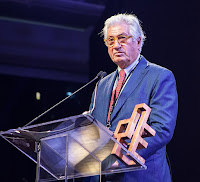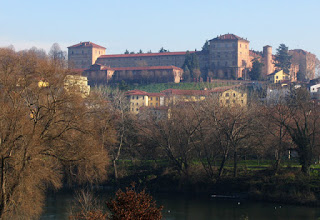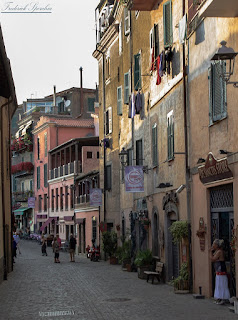Dino De Laurentiis – film producer
Campanian pasta seller helped make Italian cinema famous
The producer of hundreds of hit films, Agostino ‘Dino’ De Laurentiis was born on this day in 1919 at Torre Annunziata, near Naples in Campania. He made Italian cinema famous internationally, producing Federico Fellini’s Oscar- winning La Strada in 1954 in Rome. After moving to the US he enjoyed further success with the film Serpico in 1973. De Laurentiis was the son of a pasta manufacturer for whom he worked as a salesman during his teens. While selling pasta in Rome in the 1930s he decided on impulse to enrol at the Centro Sperimentale di Cinematografia in the city as an actor. He quickly realised he had more talent for producing and after gaining experience in the different sectors of the industry made his first film, L’Amore Canta - 'Love Song' - in 1941 when he was just 22. After serving in the army during the Second World War, De Laurentiis became an executive producer at one of Rome’s emerging film companies, Lux. Among the films he produced for Lux was Riso Amaro - 'Bitter Rice' - starring Silvana Mangano, whom he later married and had four children with. The film was a box-office success both at home and abroad. Read more…
________________________________________________________________
Leo Chiosso – songwriter
Writer of lyrics and scripts was inspired by crime fiction
Prolific songwriter Leo Chiosso was born on this day in 1920 in Chieri, a town to the south of Turin in Piedmont. He became well known for the songs he wrote in partnership with Fred Buscaglione, a singer and musician, but Chiosso also wrote many scripts for television and cinema. Chiosso met Buscaglione in 1938 in the nightclubs of Turin, where Buscaglione was working as a jazz singer. The formed a songwriting duo that went on to produce more than 40 songs. However, their friendship was interrupted by the Second World War. Chiosso was taken prisoner and deported to Poland, where he became friends with the writer Giovanni Guareschi, while Buscaglione was sent to a US internment camp in Sardinia. It was only when Chiosso heard Buscaglione playing in a musical broadcast by the Allied radio station in Cagliari that he knew his friend was still alive. They were reunited in Turin after the war and continued to write songs together. Chiosso was an avid reader of American crime fiction, which inspired his lyrics and also suited Buscaglione’s amiable gangster image. Their first hit was Che bambola in 1956, which turned humorous tough guy Buscaglione into a celebrity. A subsequent hit was Love in Portofino, recently recorded by Andrea Bocelli and also the inspiration for one of his albums. Read more…
________________________________________________________________
Danilo Gallinari - basketball player
Giant from Lodi province who plays in America’s NBA
Danilo Gallinari, one of two Italian-born players currently active in America’s National Basketball Association, was born on this day in 1988 in Sant’Angelo Lodigiano in Lombardy. Only seven Italian-born players have participated in the NBA – America’s premier basketball league – since its formation in 1946. The other Italian player presently with an NBA team is Marco Belinelli, from San Giovanni in Persiceto, near Bologna, who is attached to the Atlanta Hawks. Gallinari, who stands 6ft 10ins tall, has played for three NBA teams, the latest of which is Los Angeles Clippers. Previously he had played for New York Knicks, whose coach, Mike D’Antoni, is an American-born former player who is now an Italian citizen, and for the Denver Nuggets. Gallinari, whose father, Vittorio, played professional basketball for teams in Milan, Pavia, Bologna and Verona, began his career in 2004 with Casalpusterlengo, a third-level Italian team from a town about 25km (15 miles) from his home in Sant’Angelo Lodigiani. He moved up a tier in 2005 by joining Armani Jeans Milano and then Edimes Pavia, where in 2006 he was named best Italian player in the Italian League Second Division, despite missing half the season through injury. Read more…
Home



























